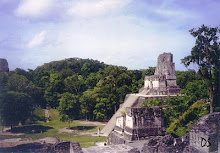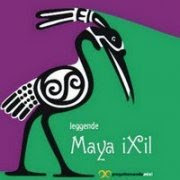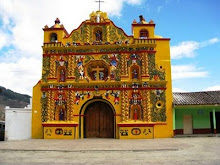The groundbreaking genocide trial of Efraín Ríos Montt, retired army general and former dictator of Guatemala, opens today with the presentation of the prosecution's first witnesses. The trial will take place despite repeated efforts by defense lawyers to halt the proceedings with legal appeals and a bid for amnesty. On March 12, the Constitutional Court rejected the amnesty request once and for all, clearing the way for the trial to begin.
Along with his former intelligence chief, José Mauricio Rodríguez Sánchez, Ríos Montt stands accused of masterminding a violent counterinsurgency campaign during his 1982-83 regime that sought to destroy opposing guerrilla forces and anyone who supported them. The indictment accuses the two men of responsibility for fifteen documented massacres in the Ixil region of the country's Quiché department, resulting in the deaths of 1,771 unarmed men, women and children. Read more about the charges and defense tactics here; and about the evidentiary hearing that led to today's oral or "debate" phase here.
Who is Efraín Ríos Montt? As the trial gets underway, the National Security Archive offers this brief biographic sketch and a description of the general's first months in power to provide background for understanding the man, his role as military dictator of Guatemala, and the crimes for which he has been indicted. The information comes not only from declassified U.S. documents released under FOIA, but from secret Guatemalan military documents obtained by the Archive through years of research on behalf of the Guatemala Documentation Project. In the coming weeks, we will offer additional analysis and documents about the Guatemalan army's counterinsurgency strategy under Ríos Montt and the impact he had among Mayan communities in the country's Ixil region.
Born in the northwestern department of Huehuetenango, Efraín Ríos Montt's military education began with four years at the Guatemalan Military Academy, an infantry course at the School of the Americas in Panama in 1950, and counterinsurgency training at Fort Bragg in North Carolina in 1961. He rose through the ranks of the Guatemalan army with positions in the prestigious Mariscal Zavala Brigade (1963-67), Army General Staff (1967-68), and Office of Inspector General (1968). [DOD 4/2/74] In 1969, Ríos Montt was named commander of the Honor Guard Brigade, then of Mariscal Zavala, and from 1970-72 served as director of the Military Academy, where he won the loyalty of the junior officers enrolled under him. He became Army Chief of Staff in 1972. [DIA 3/23/82]
After three months in the United States as Director of Studies of the Inter-American Defense College in 1973, he returned to Guatemala with political aspirations and ran as the Christian Democratic Party's presidential candidate in 1974. He lost in an election widely believed to have been stolen by Kjell Laugerud and went to Spain as military attaché in 1974-1977. He then returned to Guatemala and remained on active duty without assignment until the coup against President Romeo Lucas García, when support within the junior officer corps propelled him into the country's leadership. [DIA 3/23/82 and DIA 3/27/82]
The coup placed Guatemala under the control of a Provisional Military Junta led by Ríos Montt and two other army officers, Gen. Horacio Maldonado Schaad and Col. Francisco Luis Gordillo. Although not universally respected within the military due to his eccentric personality and evangelical religious views, Ríos Montt was considered a professional officer whose defeat in the blatantly fraudulent presidential election of 1974 gave him a "reputation for honesty" among younger officers, according to a report by the State Department Bureau of Intelligence and Research. [INR 8/4/82]
Immediately after the coup, the junta suspended the 1965 Constitution and dissolved Congress. [Orden General 7-82] Instead, the government would operate under a new "Fundamental Government Statute" (Decree Law 24-82, Estatuto Fundamental de Gobierno), signed on April 27, 1982. The statute declared that the military would take over the functions of the executive branch as well as the legislature, stating, "The legislative functions will be carried out by the military government by means of decreed laws." [EFG Article 4, page 2] The document gave the junta command over the armed forces, as well as the legal framework for the implementation of its political strategy, laid out in the National Plan for Security and Development (PNSD).
The PNSD, a key document drafted by a working group from the Army General Staff and the Center for Military Studies on April 1, 1982, decried the deterioration of the country's stability and proposed a sweeping plan to transform society with a "nationalism compatible with the traditions of the country." The State would act as the engine of a counterinsurgency project that would coordinate the "political, economic, psychosocial and military" dimensions of national life to defeat the guerrillas. In order to achieve its goals, the PNSD recommended, among other objectives, granting increased legal capacity to anti-subversive government entities, improving internal security operations, augmenting military intelligence and creating a plan for population control. The Plan called for the application of "Psychological Action at every level," the monitoring of economic conditions that fostered subversion, the promotion of solutions, and the establishment of a process for "national ideological formation." The PNSD was a reflection of the Junta's intent to harness all actions of the State, including rural development and social programs, in support of the counterinsurgency. [Plan Nacional de Seguridad y Desarrollo]
Together, the National Plan and the Fundamental Government Statute provided the junta with a political and legal framework within which the armed forces could operate freely to take whatever means necessary to crush the insurgency. Additional decree laws permitted the military to expand their jurisdiction into all affairs of state, ensuring that no other institution interfered with their counterinsurgency objectives. The laws granted the armed forces greater operational flexibility and expanded their authority over civilian sectors of Guatemalan society. Decree Law 44-82, for example, mobilized the civilian population into patrols [Orden General 18-82]; Decree Law 47-82 created new Special Military Commands for civilian air force and naval reservists. [Orden General 19-82] These and other measures served to establish counterinsurgency structures in the highlands that were integral to the war effort, creating the infrastructure necessary to carry out scorched earth operations against the civilian population in conflict zones. After accepting the junta presidency, Ríos Montt moved quickly to assert control over the armed forces, consolidate his power base and undermine potential countercoup plotting. He ordered a massive reassignment of hundreds of officers, moving many of them out of important posts within the presidential staff and guard in the capital to tactical positions dispersed on bases across the countryside. [Orden General 10-82] By February 1983, more than half of those appointed had been transferred or relieved again. This was Ríos Montt's way to "keep the military leadership off balance and prevent the establishment of power bases" that might challenge or oust him. [US Embassy, 2/18/83]
The U.S. Defense Intelligence Agency described an early test of Ríos Montt's ability to maintain military discipline over powerful young officers when a group of them opposed his decision to order massive reassignments through General Order No. 10, issued on April 12, 1982. Captains Mario S. López Serrano, Roberto Letona Hora and Otto Pérez Molina - today the elected president of Guatemala - were singled out for allegedly corrupt dealings and involvement in countercoup plotting, and briefly arrested and confined on the Honor Brigade base. They were freed by Ríos the next day after he consulted with the Junta advisory group, but his point was made. Before they were released, Ríos reportedly spoke privately with the three, warning them that evidence of their corruption would be made public if their opposition to the officer transfers continued. Subsequently every officer from the dissident group who was reassigned by the General Order turned up for duty. [DIA, 5/10/82]
Seventy eight days after the coup, Ríos Montt disbanded the junta and named himself President of Guatemala. [Orden General 15-82] An amnesty that had been declared on May 24 for political crimes committed by "members of subversive factions" or by members of the security forces was ended on June 30, and on July 1 Ríos declared a month-long state of siege. He claimed that 1,857 people turned themselves in under the amnesty, but - as the US Embassy quoted him as saying - it was now necessary to go after "those who have brought chaos to Guatemala… those who offer the red paradise of slavery, those who have unleashed the chain of death." In order to end the insurgency and institute justice in place of the "abuse of power," which had resulted in bodies found daily by the roadside, Ríos Montt announced the creation of special tribunals that would try subversives and execute those found guilty. He said the "final battle" against the guerrillas had begun and it would be a "fight without limits." [US Embassy, 7/1/82]
For ongoing trial summaries, commentary and analysis, see a new Website launched by the Open Society Justice Initiative in partnership with the National Security Archive, the International Center for Transitional Justice, CEJIL and the Guatemalan news site Plaza Pública: http://www.riosmontt-trial.org/
Kate Doyle, National Security Archive Electronic Briefing Book No. 419,
19/03/2013














